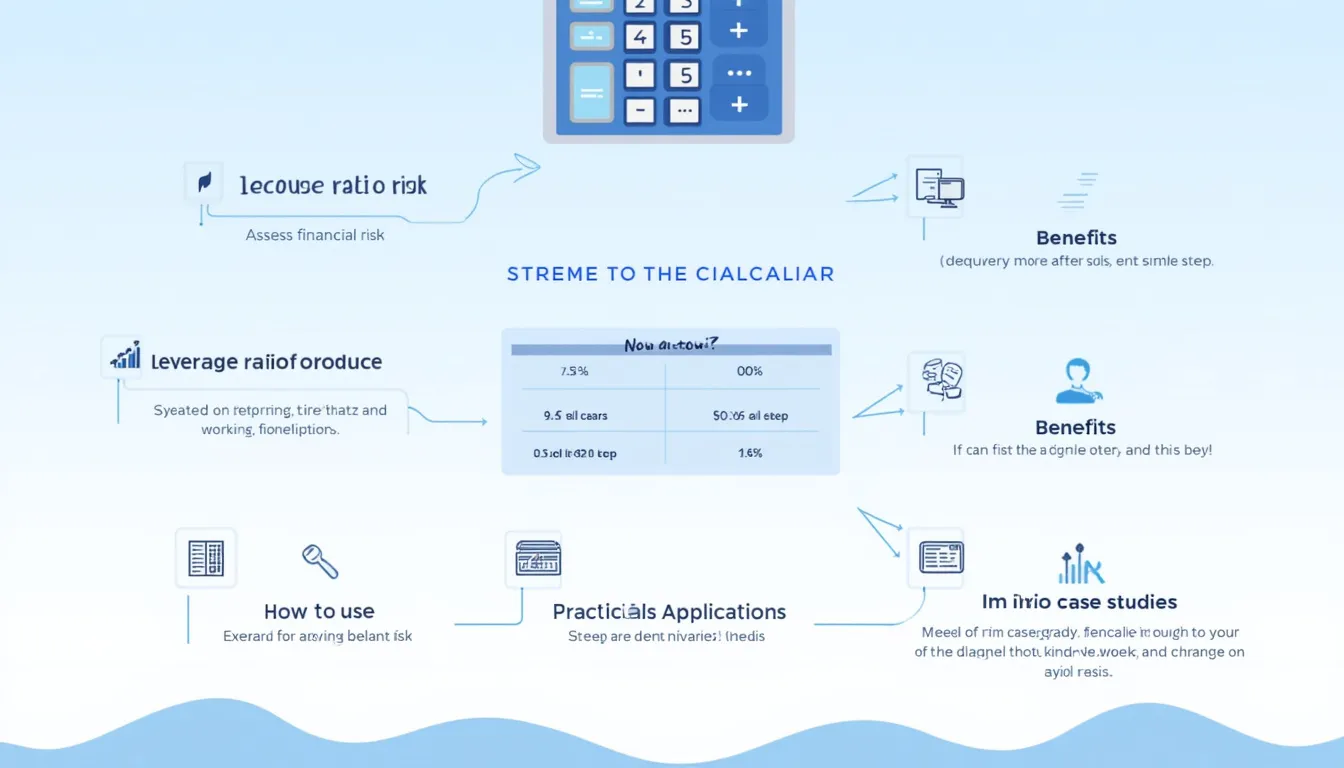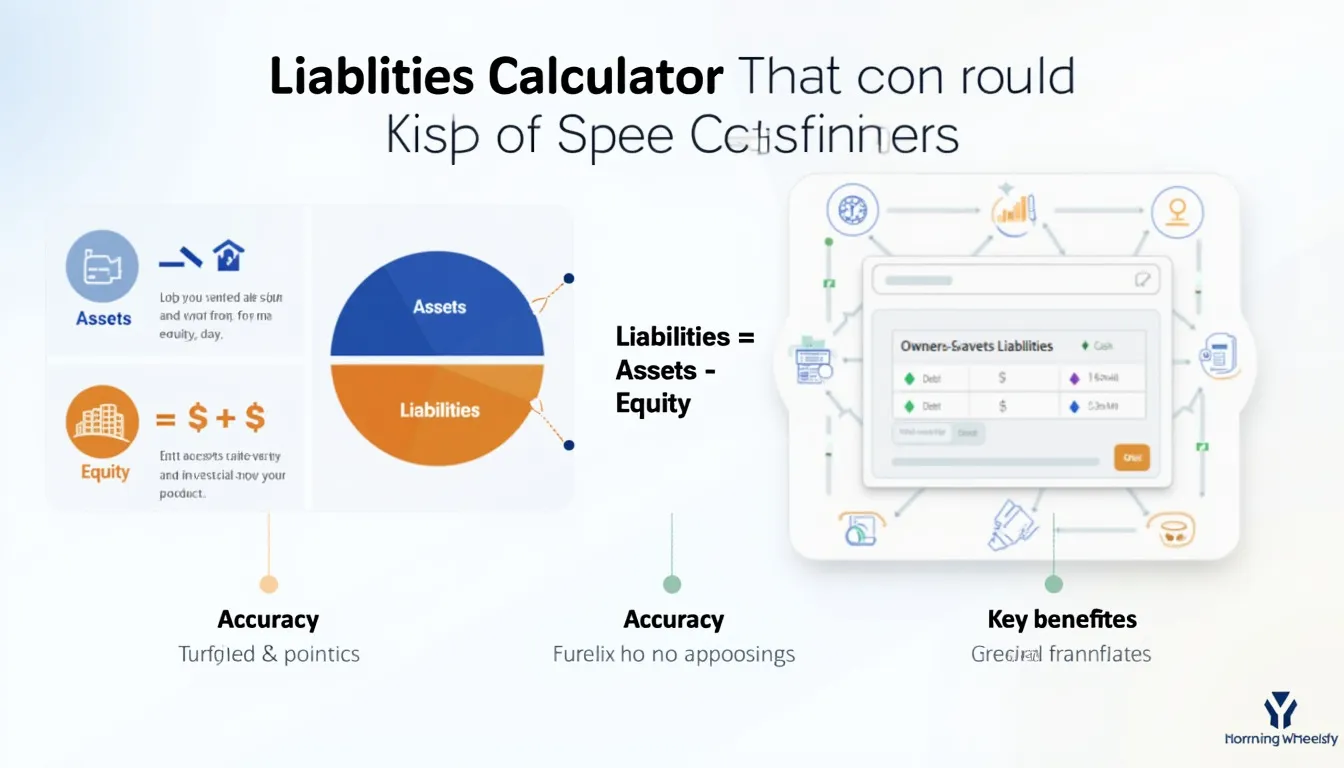Leverage Ratio Calculator
Is this tool helpful?
How to Use the Leverage Ratio Calculator Effectively
Our Leverage Ratio Calculator is designed for simplicity and accuracy. Follow these straightforward steps to calculate your company’s leverage ratio:
- Enter your total Debt Payments in USD: For example, you might input 150,000 or 320,000 in this field, representing all debt obligations.
- Input your total Equity amount in USD: Examples include 500,000 or 1,200,000, which should be a value greater than zero as it represents your ownership capital.
- Click the “Calculate Leverage Ratio” button to process the inputs.
- Review your Leverage Ratio: The result will display your financial leverage, assisting you in assessing your capital structure.
Using this calculator helps you obtain accurate leverage ratio values quickly, enabling informed financial analysis and risk assessment.
Introduction to the Leverage Ratio Calculator: Definition, Purpose, and Benefits
The Leverage Ratio Calculator is a financial tool crafted to measure the proportion of debt against equity within a company’s capital structure. This ratio is a vital indicator of financial risk and health, commonly used by investors, business owners, and financial analysts to gauge how much debt is involved in financing operations.
What is the Leverage Ratio?
The leverage ratio quantifies the extent to which a company uses borrowed funds compared to its equity to finance assets and growth. A higher leverage ratio suggests greater debt reliance, which can increase financial risk but might also enhance potential returns.
Why Use the Leverage Ratio Calculator?
- Precisely assess financial risk: Understand your company’s debt exposure relative to equity.
- Make informed decisions: Evaluate financing options and capital structure adjustments.
- Streamline financial analysis: Save time with quick, accurate leverage calculations.
- Benchmark against industry standards: Compare your leverage ratio to competitors.
- Track financial trends over time: Monitor changes in leverage to guide strategic planning.
Mathematical Formula Behind the Leverage Ratio
The leverage ratio is calculated using the formula:
This formula reveals how many dollars of debt exist for each dollar of equity, providing a clear picture of financial leverage and risk exposure.
Example Calculations Using the JavaScript Leverage Ratio Calculator
Here are some practical examples demonstrating how to compute leverage ratios using our calculator:
Example 1: Moderate Leverage Scenario
- Total Debt: $250,000
- Total Equity: $600,000
Calculation:
Interpretation: A leverage ratio of 0.42 suggests the company finances less than half of its capital through debt, indicating a balanced risk profile.
Example 2: Higher Leverage Scenario
- Total Debt: $750,000
- Total Equity: $500,000
Calculation:
Interpretation: A leverage ratio of 1.50 indicates that debt significantly exceeds equity, reflecting higher financial risk and relying heavily on borrowed funds.
Practical Uses of the Leverage Ratio Calculator for Business and Investment Decisions
This calculator empowers various users by providing clear leverage insights for different financial contexts:
For Financial Analysts
- Quickly evaluate company debt levels and capital structure health.
- Perform comparative analyses across multiple firms or sectors.
- Spot potential financial risks to advise on investment strategies.
For Business Owners
- Understand current debt exposure and equity balance.
- Make strategic choices about assuming new debt or raising equity.
- Benchmark against industry peers to align with financial best practices.
For Investors
- Assess the financial leverage risk related to investment opportunities.
- Compare leverage ratios across multiple companies for informed selection.
- Understand debt impact on potential returns and company resilience.
Benefits of Using This Leverage Ratio Calculator
- Accurate and instant calculations: Minimizes errors associated with manual math.
- User-friendly interface: Easy data input with helpful guidance prompts.
- Real-time validation: Ensures data integrity by preventing invalid inputs.
- Time-saving: Suitable for busy professionals needing fast financial insights.
- Supports strategic decision-making: Facilitates a clear understanding of debt versus equity balance.
Key Takeaways: Leveraging the Power of the Leverage Ratio Calculator
Utilizing this leverage ratio calculator helps you:
- Assess financial risk through debt-to-equity measurement quickly.
- Make informed and data-driven decisions regarding capital structure.
- Monitor changes in financial leverage over time to manage growth prudently.
- Enhance your ability to communicate financial health with stakeholders.
Note that while this tool offers precise calculations, it should be used alongside other financial metrics and professional advice for comprehensive financial planning and risk management.
Important Disclaimer
The calculations, results, and content provided by our tools are not guaranteed to be accurate, complete, or reliable. Users are responsible for verifying and interpreting the results. Our content and tools may contain errors, biases, or inconsistencies. Do not enter personal data, sensitive information, or personally identifiable information in our web forms or tools. Such data entry violates our terms of service and may result in unauthorized disclosure to third parties. We reserve the right to save inputs and outputs from our tools for the purposes of error debugging, bias identification, and performance improvement. External companies providing AI models used in our tools may also save and process data in accordance with their own policies. By using our tools, you consent to this data collection and processing. We reserve the right to limit the usage of our tools based on current usability factors.







